Pressure to replace controllable and low-cost coal and gas with an intermittent and high-cost wind and solar alternative continues, but there are increasing signs of unease with this policy. Some of this may stem from a growing recognition of the implausibility of the government’s claims that the ‘transition’ to wind and solar will be both smooth and cost less when finished.
For many, a compromise that will give a secure electricity supply without carbon emissions is nuclear. This, though far more expensive than coal as a source of electricity, is safe and, being controllable, is cheaper than wind and solar.
The problems with nuclear include the long gestation time required to bring a new plant online, a factor accentuated in Australia by long-standing political anxiety whipped up by the ALP and by anti-nuclear green parties. However, following a debate that encompassed nuclear on this week’s ABC program, Q and A, there was considerable support for nuclear shown by the (traditionally left-wing) online audience.
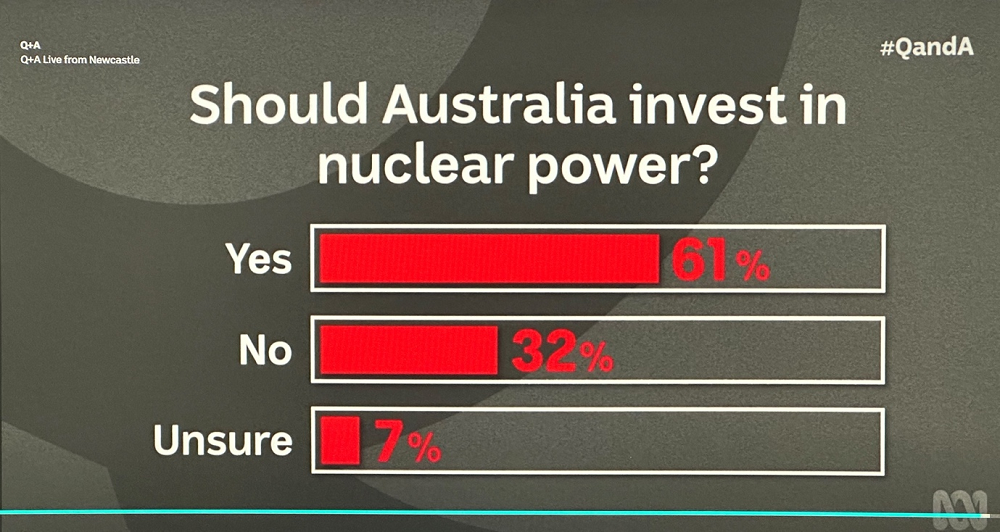
Screenshot from Q&A
Doubtless, a contributory factor is the ALP’s acceptance that nuclear power is safe, which is intrinsic in its adoption of a nuclear submarines policy.
In addition, opposition to adverse environmental consequences of wind and solar is growing. Veteran green energy campaigner, Bob Brown, was an early critic of the impact windfarms have on wildlife. And we are also seeing an increased recognition, including by former rooters for wind and solar, of an environmental downside. For example, the Daily Mail reports:
‘Oliver Yates, who ran the Clean Energy Finance Corporation from 2012 to 2017 and was personally responsible for ensuring Australia’s first offshore wind farm – the Star of the South – progressed to the approval stage has now publicly criticised the proposed ocean site for wind turbines close to his property on the New South Wales Central Coast.’
Other opposition is coming from rural interests who are concerned about the visual intrusion from the proliferation of above-ground power lines traversing their property. Those power lines, which entail a further subsidy for wind and solar, are necessary to service the increased geographically dispersed wind and solar electricity sources.
Offshore wind has led to an apparent increase in whale beachings off the US East Coast and Australia’s planned boost in offshore facilities is likely to have (or be seen to have) a similar deleterious effect, especially given the migratory patterns.
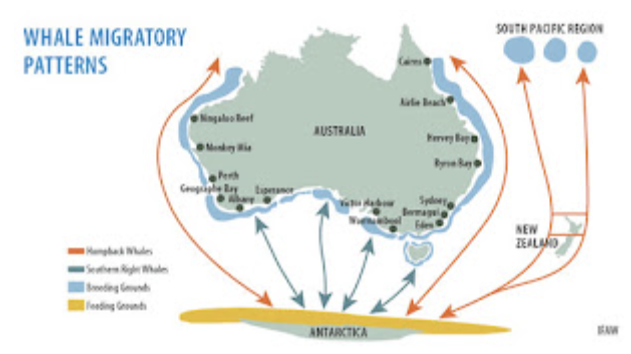
Policy reviews aimed at renewables are being seen more widely.
In Europe, new coal mine developments are now virtually embargoed and gas is becoming the target. Gas wells remain of great potential, especially with the banning of Russian supplies. To stymie gas competition for the subsidised renewables, the Opposition UK Labour Party policy is to ban any further oil and gas developments in the North Sea. This though is coming under pressure from within as well as from Labour’s erstwhile allies, the Scottish Nationalists.
The Netherlands is already shutting down its domestic gas production to reduce emissions and has moved to eliminate great chunks of its livestock industry, a huge source of the nation’s exports. This led to a new farmer-citizen alliance being catapulted into becoming the nation’s largest political party. However, that outcome has yet to stop similar proposals being progressed elsewhere in Europe.
Germany is seeking to confirm the EU’s anti-nuclear policy, but France is setting about building new reactors (ostensibly to create a new green hydrogen industry using nuclear-generated energy), Finland has a new reactor and Italy, having shut all nuclear plants in 1990, now plans 7 plants by 2050.
Currently in fashion are proposals to ban the use of gas for heating. This is based on the premise that, notwithstanding lower emissions from gas compared to coal, the ‘transition’ to wind/solar will mean far fewer emissions per unit of energy by using electricity. But the proposals are facing headwinds. The UK currently plans this to come into operation for new houses after 2025. A similar plan for Germany, where last year two-thirds of all new heating systems sold in the country still ran on gas or oil, is causing strains within the Socialist-Greens-Free Democrat coalition.
The US is also facing major resistance in progressing through the House of Representatives the elimination of gas for heating and cooking.
Moreover, although the US Congress has largely caved into the Biden Administration’s increased subsidies for renewables, one important amendment to the so-called Inflation Reduction Act concerned regulations covering electricity transmission lines. Originally slated for fast-track regulatory approval treatment, the policy was changed to make regulatory measures subject to a ‘study’. As in Australia, renewable energy in the US is geographically diffuse and, as well as requiring subsidies to make its construction financially feasible, requires new transmission lines. Naturally, the wind/solar plant developers are seeking links for the generation facilities to be compulsorily financed by customers. But, as in Australia, the morass of environmental regulations is now inhibiting the take-up of wind and solar.
While the renewables locomotive is steaming ahead supported by other green measures, the high costs and adverse environmental side baggage it is carrying are slowing its destructive progress. Can that baggage derail the economic and environmental damage it is creating?
Got something to add? Join the discussion and comment below.
Get 10 issues for just $10
Subscribe to The Spectator Australia today for the next 10 magazine issues, plus full online access, for just $10.

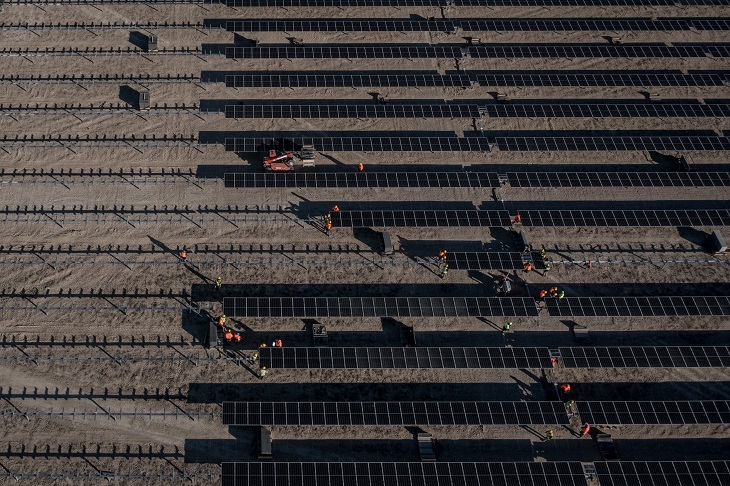

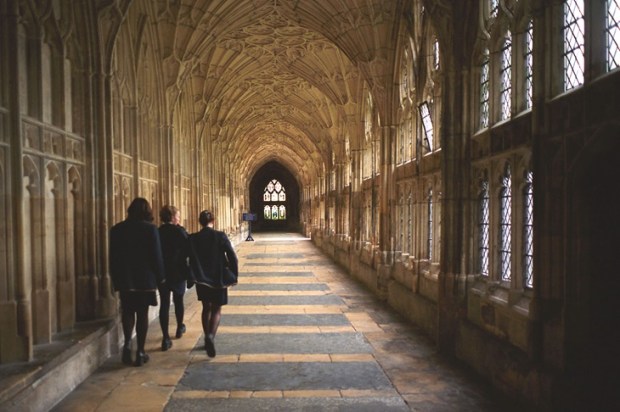


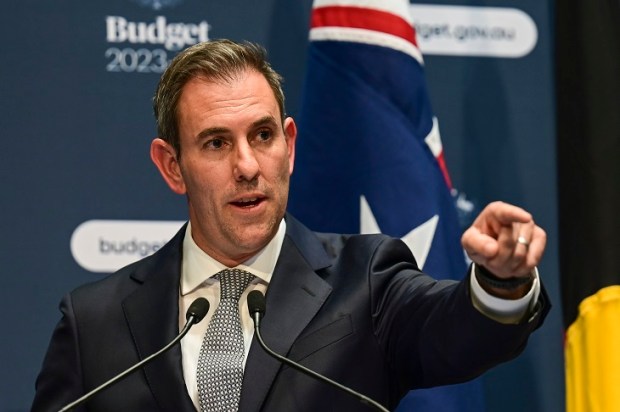



















Comments
Don't miss out
Join the conversation with other Spectator Australia readers. Subscribe to leave a comment.
SUBSCRIBEAlready a subscriber? Log in